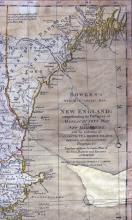Pre-Revolutionary Maine
Between 1675 and 1763 there was a nearly continuous series of wars in Maine between the British and the French/ Native Americans. Both groups wanted Maine’s land and resources. The wars were related to conflicts in Europe at the same time.
In King Philip's WarKing Philip's War
1675-1678 The first of the New England Indian wars. King Philip was an Indian leader who organized the Pequots and their neighbors in Massachusetts and Rhode Island to drive out the English settlers. He was killed by the British, but the conflict spread and grew into 150 years of intermittent warfare, involving the English, French, and Native Americans. The first one was a colonial affair; later ones would involve the French. (1675-78), the English fought the French and Indians for Castine.
During King William's WarKing William's War
1689-1697 First of a series of French and Indian wars that were reflections of wars in Europe. In Maine, Falmouth was burned, Wells attacked, and the forts at Pemaquid Point captured by French who had a base in Castine ( Penatagoet). (1688-99), the French and English fought over Acadia—included Nova Scotia, New Brunswick, and much of Maine. The treaty ending this war resulted in the Natives deeding more land to the English. It caused a long-lasting misunderstanding between Indians and non-Indians.
Queen Anne's WarQueen Anne's War
1702-1713. Second of four French and Indian wars; this was the War of Spanish Succession in Europe. The French and their Abenaki allies interrupted commerce on the Maine coast and attacked the forts at Casco and at Winter Harbor on the Saco. The English did take the fort at Port Royal, renaming it Annapolis Royal. At the war's end, the French turned over Newfoundland and Acadia, the southwestern part of Nova Scotia, to the British. Warfare on the Maine coast contined with Lovewell's War. (1703-1713) : In 1713 the Treaty of Utrecht between France and England gave all of Acadia to English. This caused more disputes between the English and the Indians over land. The French still held Quebec.
More wars resulted over the next 50 years: Dummer's WarDummer's War Governor Dummer's War
1722-1725. One of a series of colonial wars in which English colonists fought with French and Native Americans. This one was in Northern New England, Vermont, New Hampshire and Maine and was mostly a series of skirmishes. It was the peak of Indian warfare in Maine, with colonists taking the major Abenaki settlement at Norridgewock, burning Old Town, and fighting at Fryeburg. (1722-1727), King George's WarKing George's War
1744-1748 The War of Austrian Succession between France and England. The third French and Indian War in America, starting in Maine with raids on English settlements. Its highlight was the capture of the French fortress at Louisbourg in Nova Scotia by an American colonial expedition. (1744-1751), and the French and Indian WarFrench and Indian War
1754-1760. Conflict between the British and American colonists on one side, and the French and their Indian allies on the other, for control of Canada and territory in Maine. It ended in the Treaty of Paris in 1763. The outcome ended French influence in Canada and the Northeast. (1754-1763). Maine’s Old Fort Western was built in 1754.
These years were devastating to settlers and Indians alike. From 1689 to 1713, not a single English home stood in Maine north of Wells.
English treatment of the Indians aggravated the situation. They forced tribal leaders to sign land deeds that were misunderstood. The French encouraged the Indians to attack English settlers. English retaliation against the Natives included bounties on scalps.
The French encouraged Maine’s Indians to form the Wabanaki ConfederationWabanaki Confederation
Penobscot, Maliseet, MicMac, Passamaquoddy, and Abenaki Natives, who formed a confederation in the 18th century., making the English even more worried about protecting their settlements in Maine.
The English captured French Quebec in 1759, and the subsequent signing of the Treaty of ParisTreaty of Paris
The Treaty of Paris of 1763 ended the Seven Years or French and Indian War. By its terms, Canada became a British colony. The Treaty of Paris of 1783 ended the American Revolution and granted America independence. ended the French and Indian Wars. It also ended the French presence on the Maine coast, resulting in slow, but increased settlement of midcoastMidcoast
In Maine, generally refers to the area between the Kennebec and Penobscot Rivers. and downeastDown East downeast; down-east
Easternmost part of Maine, or Maine in general, is often referred to as Down East. It is so called because it lies down wind and to the East from Boston. Maine after 1760. All of Canada was given to England. The British issued a proclamation promising Indian tribes the right to keep all the lands they held at the end of the war. Bad feelings between the English and the Indians still existed, however, because the English continued to encroach on Indian lands for farming and hunting.
Throughout these wars, Europeans on the coast of Maine created sparse but determined settlements of fishermen, traders, and lumbermen who paid little attention to official developments and proclamations of the English and French nobility. These small settlements of Scotch-IrishBorderlanders Scotch-Irish
Scottish families living in Northern Ireland. Also called Scotch-Irish. Many Maine settlers were from this group of people, who were known for their toughness and ability to live on the frontier. fishermen and farmers were the origins of Maritime Maine.

